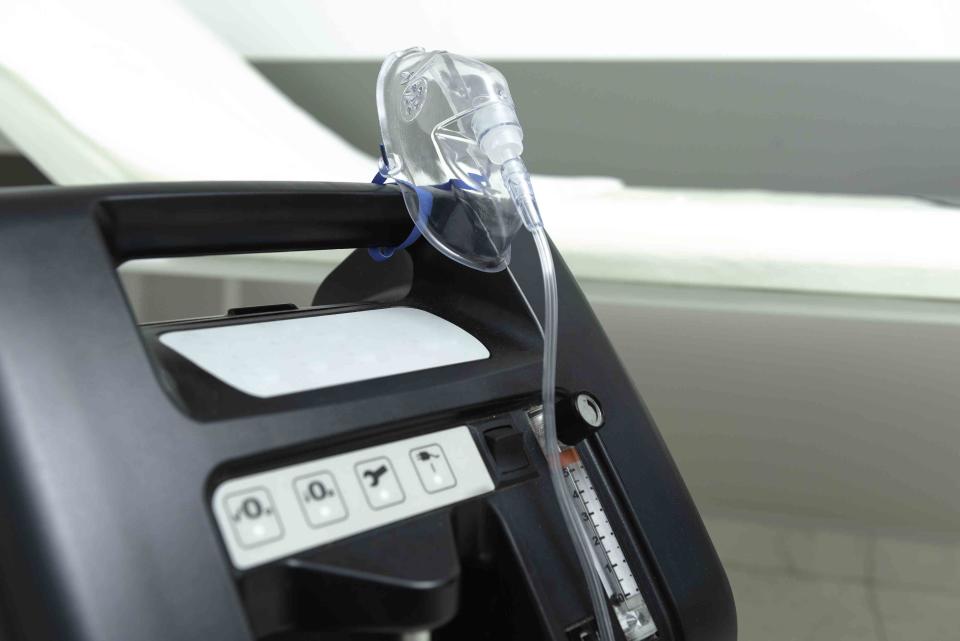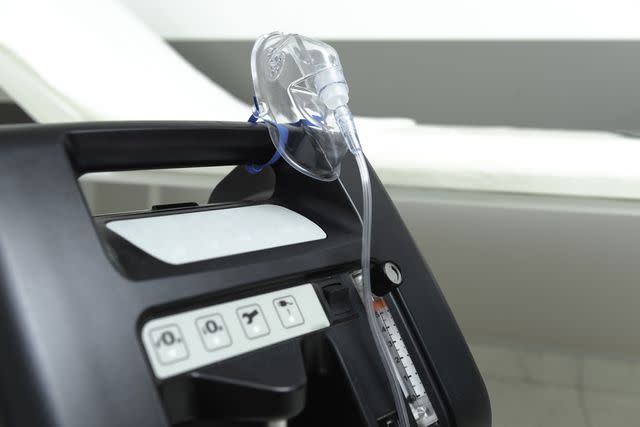What Is APAP?
Automatic Positive Airway Pressure

Secha6271 / Getty Images
Medically reviewed by Sanja Jelic, MD
APAP, or automatic positive airway pressure, is a type of therapy to treat breathing challenges during sleep as well as the machine used to provide the treatment. Like other positive airway pressure (PAP) devices, APAP helps people with sleep apnea breathe while sleeping.
Learn about the conditions treated with APAP, its use, treatment outcomes, and more.

Secha6271 / Getty Images
What Is an APAP Machine?
An APAP machine treats sleep apnea, a condition characterized by difficulty breathing during sleep. This machine pushes air into the nose, mouth, or both through a face mask or nasal cannula (a device with tubes that delivers supplemental oxygen or an increase flow of air) to promote consistent breathing. Unlike other types of PAP devices, APAP automatically adjusts the air pressure a person receives during sleep.
Conditions Treated With APAP
APAP is used to treat two different types of sleep apnea, which are:
Obstructive sleep apnea (OSA) happens when the airways are blocked during sleep, leading to snoring, difficulty breathing, or breathing pauses.
Central sleep apnea (CSA) occurs when the communication challenges between the brain and muscles that control breathing lead to pauses in breathing during sleep.
Sleep apnea is also linked to heart conditions such as heart failure. Treatment options for sleep apnea vary depending on disease severity and individual response to treatment.
How Do You Get an APAP Machine?
PAP machines such as APAP require a prescription from a healthcare provider. The first step in getting an APAP machine is to be diagnosed with sleep apnea. Diagnosis generally involves an evaluation and assessment by a healthcare provider and a sleep study.
A healthcare provider will order a test to observe your sleep patterns (polysomnography). This test may be done in a sleep lab or in your home. While testing at home may be more convenient and cost less than testing in a lab, it is less comprehensive, and you may be asked to do additional testing in a lab.
Who Treats Sleep Disorders?
Sleep apnea can be diagnosed by a sleep specialist such as a pulmonologist (lung doctor) or an otolaryngologist (an ear, nose, and throat specialist, or ENT) who is trained in sleep medicine. A pulmonologist typically diagnoses and treats obstructive sleep apnea.
In addition to diagnosing medical conditions related to sleep, these healthcare providers may also be able to prescribe an APAP machine or other sleep apnea treatment options.
Types of PAP Devices
Different types of positive airway pressure devices help people with sleep apnea. These machines are classified by their features and how they deliver oxygen.
Each type of machine has various attachments that fit on the face, mouth, or nose to deliver the air, which is crucial for effective treatment. Each type of machine has different benefits, and the ideal option depends on the person, the kind of sleep apnea they experience, and how well the treatment controls their symptoms.
APAP vs. CPAP
Continuous positive airway pressure (CPAP) is the most common treatment option for sleep apnea. As the name suggests, this machine provides constant air pressure, maintaining the same pressure level throughout sleep.
APAP is different because air pressure levels change throughout the night based on the needs of the person using the device. It is unique because it changes pressure automatically by measuring and responding to the person's breathing.
APAP vs. BiPAP
Bilevel positive airway pressure (BiPAP) is a sleep apnea treatment that helps people with sleep apnea breathe throughout sleep. Like APAP machines, BiPAP machines can deliver different air pressure levels during sleep. However, they are set to have only two different pressure levels; one level is for breathing in, and the other is for breathing out.
The bi-level functionality of the BiPAP allows for a higher level of pressure for inhaling than could be tolerated while exhaling, which can help improve breathing in people who cannot completely control their symptoms with CPAP. APAP machines automatically adjust the pressure throughout the night, while BiPAP machines do not.
Outcomes With APAP
Sleep apnea is a serious health condition because it affects sleep, which is essential for health and quality of life. It can also lead to other health concerns, such as:
High blood pressure (hypertension)
Stroke
Accidents and injuries related to being sleepy during the day
PAP therapy is generally the first treatment option for people with sleep apnea. People who can't tolerate CPAP may tolerate APAP. It is an effective treatment for sleep apnea, and people with this condition can manage their symptoms and live healthy lives.
Summary
Sleep apnea is a serious medical condition affecting sleep quality and leads to health concerns. Automatic positive airway pressure (APAP) is a way of treating sleep apnea involving a machine that delivers air through tubes connected to a face mask that covers the nose, mouth, or both.
Unlike other types of positive airway pressure devices, APAP can measure the breathing of the person using it and automatically adjust the pressure setting during sleep. APAP is an effective treatment option for many people. Healthcare providers specializing in sleep can help diagnose and treat sleep apnea.

